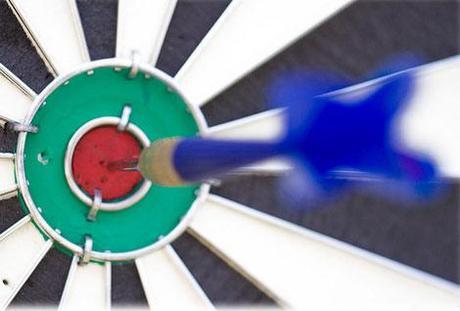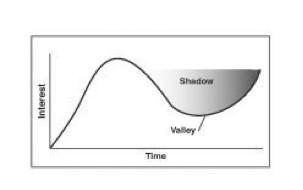
The more motivated you are to learn, the higher your chances of success become.
Why do you want to learn ? is a key question and maintaining your motivation level is crucial for successful long-term learning.
One of the best ways of doing this is to find someone in your circle of friends or colleagues who can learn at the same time as you and act as a support mechanism – a tandem learner
Being as learning is ultimately about communicating and making sense of the world, working with another person is a logical step as well as a practical one.
Many adults consider that it is too late to learn new things as their memories don’t work as quickly or effectively as they did when they were 20.
Some also experience certain hearing difficulties which in turn poses difficulties, especially in language learning.
In spite of this most adults are self-motivated, disciplined with at least some idea of learning strategies learnt through experience.
These are some of the learning advantages adult learners have over children – although all is not in their favour.
But even adults can become discouraged, feeling they are on a « plateau » that is difficult to get off in learning terms, when their progress slows down.
To get around this, probably one of the most effective ways is to have clear objectives set out in front of you, although this is, at the outset, sometimes a very complex task to undertake.
Here are a few tips:
- Put a time limit in order to know where you are with your objectives at a given time and if you need to accelerate your learning process.
- Review your objectives regularly and especially just before a training or a coaching session
- Make sure you consult with your coach at every occassion where you feel that your objectives need changing and always keep in mind « Stretch objectifs ».
- Be honest and realistic with yourself.
- Alongside your long and mid-term objectives you also need to establish
Short term objective (every day and every week) for example a daily or weekly objective to achieve.A daily objective could be to ….
- Measure your objectives on a regular basis – this will help you to realise that you have accomplished something useful.
When you attempt to set and establish your objectives, try to narrow things down and set clear achievable targets.
Set clear timescales – the end of the month, next week at the beginning of May are not specific enough – set clear dates and times.
If you need to, ask yourself questions and imagine that you are the questionner.
Set out a number of Wh questions to ensure that the objective becomes clearer, more acheivable and free from ambiguity :
Why / When / What / When / When
You should define priority objectives ; you will experience times when it is difficult to achieve what you have decided to do.
Sort through and decide which is the most important by order.
Do not leave things systematically up in the air, rather you should and find the priorities in your work and set time aside to do them.
This is especially important for things that never appear at the top of your list of priorities.
Find your Learning Prime-Time
Find the ideal time for this type of task during the time you have allotted for Self-Managed Learning.
This could be the morning or the evening, you need to find your own « Prime Time » where you are the most awake, receptive and productive.
People learn specific skills easier at certain times of day.
People also learn specific skills easier at certain ages than at others.
Children can be experts at Rollerblading after an hour, but grandfathers probably need a little longer.
These prime times for learning are also called windows of opportunity.
These are times when the brain is most ready to learn something new. It’s as if a window in the brain opens for a while, making it easier to learn certain new skills or gain new knowledge.
Then the window closes.
When it’s closed, we still learn, but it’s harder.
It is virtually impossible to achieve an objective without planning and prioritising it beforehand and then giving the necessary time to be able to achieve it.
One solution is to set aside between ½ and 1 hour per day for learning, this may sound a lot, but it does not need to be at one shot – it can be spread throughout the day – we get nothing for nothing and learning by proxy doesn’t exist (yet) !
Some people put a day aside, usually at the weekend, for learning – which may work for when we need to revise and swot up for an exam, although questions remain as to the effectiveness of block-one-shot learning.
However, this model doesn’t work effectively for language learning where regular exposure to the sounds / speaking / reading and writing is absolutely necessary in order to progress.
It is much more effective and efficace to set aside time EACH & EVERY day for learning, for many reasons :
- We are talking about acquiring an ability to undertake a skill, much like playing the piano where regular practice is a must.
- We are not talking about absorbing a body of information and unchangeable laws to be regurgitated later, such as in maths or physics .
- A more gradual and long-term approach is needed that is very suited to experiential learning in languages, which is easier to achieve, less boring and avoids overload if well managed.
- Being exposed regularly to situations where the language is used / spoken etc. helps memorisation and retention.
- Time is needed to transfer knowledge and concepts from short to long-term memory.
When learners are young and in elementary school, teachers teach the modalities and learning “just happens.”
As learners get older, the delivery system for gaining information is more and more lecture style.
How many learners learn by auditory lectures?
Approximately 30%.So, what is happening to the other 70% of the learners?
If you spend any time in a school classroom, you know the answer to this question. The remaining 70% are :
- straining to focus,
- feeling inferior (stupid),
- confused,
- checking out (daydreaming), or
- entertaining themselves.
When is your prime time?
Prime time is when you are most receptive or « awake » for learning episodes.
Any learning requires a certain input and implication of the learner – sometimes this can be called study-time or revision, I prefer to call it “Self-Managed-Learning” – in as much as it is learning that is managed by the learner in terms of :
* What is learnt
* When it is learnt
* How it is learnt
Prime Time for Self Managed Learning (SML) is when you are relaxed, prepared, free of interruptions and ready to learn.
This is the best moment to work on listening skills, writing and other activities which demand concentration.
If you decide to extend your SML session, then don’t forget to take breaks, drink, get up, walk around etc. to ensure maximum concentration stimulus over an extended period.
You will experience times when you lose concentration, but you can still use this time to develop the « unconscious ear » by listening to a CD, TV, podcast or radio programme but in a more distanced and relaxed way.
You could perhaps do this while cooking, doing the dishes or other repetitive tasks.You could even recite sentences aloud from work that you did earlier (as long as the neighbour can’t hear you) – this will also help with memory retention of concepts.
Think about what you could do to make the most of your down-time.
The types of activities for my down-time
1.
2.
3.
4.
5.

The image above shows the effect of interest in a given subject on our concentration over a period of time.
The interesting aspect here is to note that whilst you may have to learn and spend time doing this in order to progress, it is of vital importance that what you learn is stimulating and interests you.
When working alone during SML, it is important that you guage when you work, How you work, and have a good idea of why you are working a certain way or on a certain topic and that you ensure that you use your time and energy effectively.
Whilst these points may be blatantly obvious, it is important to underline them as they are often the things that we take so much for granted that we don’t always give them enough thought.
- Always do things that interest you personally when you can.
- Variety is the spice of life – vary your activities
- Think about your preferred learning style
- Keep your objectives clearly in sight when working

